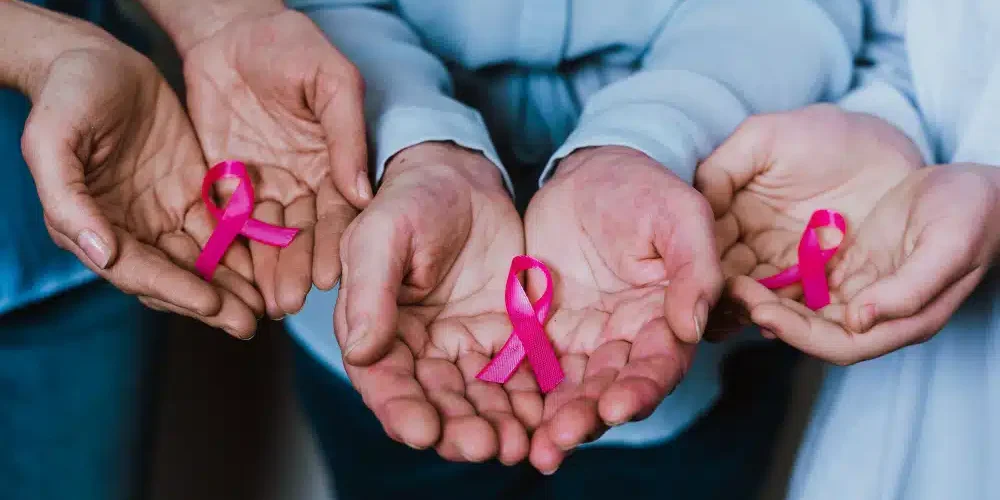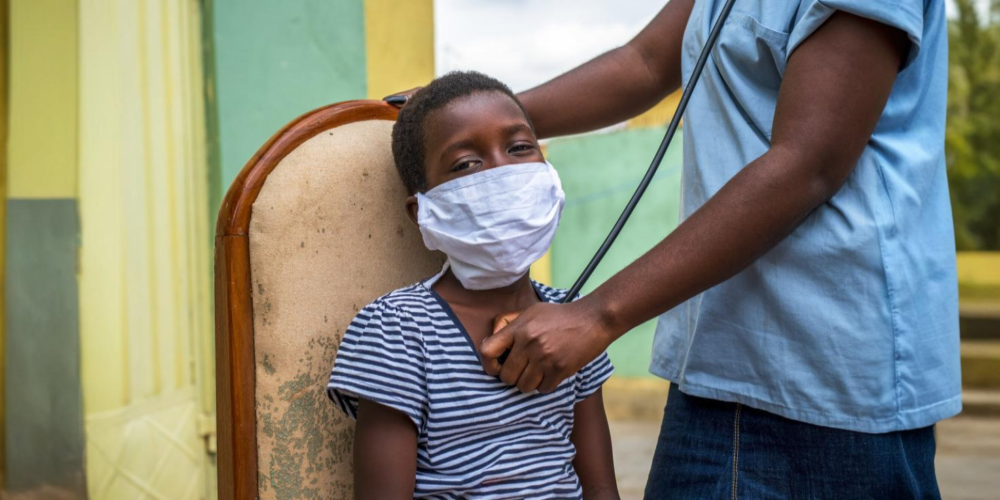Latest
Why are more Indian men getting cancer? The real reasons doctors are warning about
Cancer cases among Indian men are on the rise, driven largely by tobacco use, air pollution, and lifestyle factors, with oral and lung cancers being the most common
Author
Author
- admin / 6 days

- 0
- 10 min read

Author
Cancer is a large group of diseases with one thing in common – they occur when normal cells turn cancerous, multiplying and spreading uncontrollably. Normally, genes send instructions to cells, telling them when to start and stop growing, but cancer cells ignore these signals. This unchecked growth forms tumours and disrupts normal bodily functions. Despite medical advancements, there is still no universal cure for cancer, making awareness and early detection crucial in reducing its impact.
Globally, the burden of cancer continues to rise. According to the World Health Organization (WHO), “Cancer is a leading cause of death worldwide, accounting for nearly 10 million deaths in 2020, or nearly one in six deaths.”
The World Cancer Research Fund reported that a “total of 19,976,499 (nearly 2 crore) cases of cancer were diagnosed in 2022 – 10,311,610 (1.03 crore) among men and 9,664,889 (96.65 lakh) among women.”
The report further stated that “the age-standardised rate for all cancers for men and women combined was 196.9 per 100,000 in 2022. The rate was higher for men (212.6 per 100,000) than for women (186.3 per 100,000).”
Considering the scale of cancer cases among men, it becomes essential to understand how widespread it is, what causes this increase, which types are most prevalent, and whether India’s healthcare system is prepared to respond effectively.
How many men are suffering from cancer?
Globally, as per the World Cancer Research Fund (2022), over 1.03 crore cancer cases were diagnosed among men, of which over 6.91 lakh cases were reported in India.
In India, the situation reflects an expanding public health challenge. According to data from the ICMR–National Institute of Cancer Prevention and Research, the “estimated number of people living with the disease is around 2.5 million, with men accounting for over 2 lakh and women for over 1.95 lakh.”
What is the most common type of cancer in men in India?
Cancers of the oral cavity and lungs in males and cervix and breast in females account for over 50 per cent of all cancer deaths in India.
According to the India Fact Sheet (Globocan 2022), the most common types of cancer prevalent among men in India include cancers of the lip and oral cavity, which account for over 1.07 lakh (15.6 per cent), followed by lung cancer with 58,970 cases (8.5 per cent). Oesophageal cancer ranks next, contributing 45,608 cases (6.6 per cent), while colorectal cancer accounts for 43,360 cases (6.3 per cent). Stomach cancer closely follows with 43,060 cases (6.2 per cent), and prostate cancer makes up 37,948 cases (5.5 per cent).

The data also revealed that over 4.7 lakh men and over 4.46 lakh women died from cancer in 2022. These figures show that the burden of cancer in men is not only significant but also rising, particularly due to preventable causes like tobacco use and air pollution, which are now linked to a substantial number of cancer deaths.
What are the reasons behind this surge?
Several studies over the past decade have identified multiple factors contributing to the increase in cancer cases among Indian men, ranging from tobacco use and poor oral hygiene to genetic predispositions and air pollution.
A 2022 study conducted using the latest data from the National Cancer Registry Programme (NCRP), covering 28 population-based and 58 hospital-based registries from 2012 to 2016, found that the highest lung cancer incidence and mortality were recorded in Mizoram’s Aizawl district, with cases rising sharply in metropolitan cities from 1982 to 2016. “About one-third of the cases (36.5 per cent) in males and females (31.7 per cent) were recorded in the age group of 55–64 yr.”
Further, another 2024 study published in The Lancet’s eClinical Medicine Journal found that lung cancer in India tends to appear nearly a decade earlier than in Western countries, with most diagnoses occurring between the ages of 54 and 70. Researchers attributed this partly to India’s comparatively younger population, with a median age of 28.2 years, unlike the USA (38 years) and China (39 years).
The study also pointed to regional factors such as high air pollution levels and specific genetic mutations contributing to the trend. It highlighted that the incidence of lung cancer has risen from 6.62 per 1,00,000 people in 1990 to 7.7 per 1,00,000 in 2019, with further increases expected in urban areas by 2025. Additionally, the study noted that the higher number of male cases is linked to greater tobacco use among men (42.4 per cent) compared to women (14.2 per cent).
Dr Gaurav Jaswal, Director and Consultant Radiation Oncologist at TGH-Onco Life Cancer Centre, Maharashtra, explained that one of the key reasons for the rising number of cancer cases among Indian men is the increased accessibility to healthcare, which has led to more diagnoses. “In earlier times, if people in villages had such cancers, they might not have been diagnosed. They would have only come to know when the disease became aggressive,” he said.
He added that greater exposure to tobacco products has also contributed to the surge. “With tobacco companies running extensive marketing campaigns, the exposure to lip and oral cavity cancers has increased,” he said, adding that environmental factors such as air, water, and food pollution have further worsened the situation. “All these enhance the incidence and probably the aggressiveness of the disease as well.”
In fact, a 2024 retrospective study stated that “one of the major reasons for oral cancer and lung cancer is tobacco chewing. Any malignancy found on the lip, floor of the mouth, lining of the cheek, gingiva, palate, or tongue is referred to as oral cancer. Oral cancer is one of India’s top three cancers. The most common risk factors associated with oral cancer are chronic alcoholism, tobacco use (including cigarettes, smokeless tobacco, and chewing betel nut), and the human papillomavirus (HPV). Oral cancer can also occur due to poor dental care and a poor diet.
A study conducted by Varshitha A, 2015, demonstrated that oral cancer is interrelated with low income. Additionally, the study demonstrated the relationship between low socioeconomic class and risk factors for oral cancer development, including diet, health care, living conditions, and risk behaviours. The use of smokeless tobacco is very common in India. The states with the highest frequency of smokeless tobacco users found in Uttar Pradesh and Bihar. Squamous cell carcinoma accounts for 90–95% of oral cancer cases in India.”
Dr Jaswal pointed out that oral cavity cancers are far more common in India compared to Western countries, primarily due to the widespread use of tobacco. “In the West, oral cancers are often linked to HPV-positive cases, which is not so much the case in India,” he explained.
He also noted that lifestyle habits remain a significant factor. “The higher consumption of tobacco among men compared to women is a major reason,” he said. While genetics also plays a role, he clarified that they are not the dominant cause. “Some cancers, like colon and colorectal cancers, can have a genetic predisposition in men. But overall, it is lifestyle and exposure-related factors that drive the higher incidence.”
The way ahead
In a 2025 Lok Sabha reply, the government addressed the growing concern over rising cancer cases in India, stating that, “As informed by Indian Council of Medical Research (ICMR), the reasons for increase in number of cancer cases reported is due to access and availability of improved diagnostic techniques for detection of cancer, increased life expectancy, growing share of geriatric population, higher health consciousness and improved health seeking behaviour. Also, there has been a significant increase in the classical risk factors associated with Non-Communicable Disease(NCDs), including cancer, such as tobacco and alcohol consumption, insufficient physical activities, unhealthy diets, consumption of high salt, sugar and saturated fats, etc.”
The reply also detailed the government’s ongoing efforts under the National Programme for Prevention and Control of Non-Communicable Diseases (NP-NCD), part of the National Health Mission (NHM). The programme focuses on strengthening infrastructure, human resource development, screening, early diagnosis, referral, treatment, and health promotion for diseases, including cancer.
Currently, 770 District NCD Clinics, 372 District Day Care Centres, and 6410 NCD Clinics at Community Health Centres have been established across the country. In addition, as per the Union Budget announcement for 2025–26, the government plans to set up 200 Day Care Cancer Centres (DCCCs) in district hospitals, building on existing efforts where 372 DCCCs are already functional. This move aims to decentralise cancer care, making treatment more accessible, particularly in rural and underserved areas, while reducing the burden on tertiary care hospitals.
The government has also emphasised the preventive aspect of cancer through Ayushman Aarogya Mandirs, which promote wellness activities and targeted community communication. It continues to observe National Cancer Awareness Day and World Cancer Day while leveraging print, electronic, and social media to spread awareness and encourage healthy lifestyles.
Dr Jaswal explained that recognising early symptoms plays a vital role in cancer detection and treatment. “For oral cavity cancer, one of the most common warning signs is a mouth ulcer that doesn’t heal even after multiple visits to a doctor or after taking vitamin supplements,” he said. Other symptoms include a persistent burning sensation in the mouth, loose teeth, a change in voice, restricted jaw movement, or a lump in the neck.
Speaking about lung cancer, Dr Jaswal noted that “a persistent cough, blood in sputum, chest pain, and difficulty in breathing” are among the key symptoms. In advanced cases, these can worsen as the disease progresses. For colorectal cancers, he said, “patients often notice changes in bowel habits — either too frequent or too hard stools — along with unexplained weight loss of more than 10% in six months, or anaemia that causes fatigue and weakness.” Blood in stools and abdominal pain, he added, are later-stage warning signs that warrant immediate medical attention and diagnostic scans.
On the subject of cancer screening, Dr Jaswal said India has recently begun to strengthen its preventive healthcare systems. “The Indian government is gathering momentum in screening efforts that were largely missing earlier. Most government hospitals now have well-equipped NCD departments with trained staff for basic checkups,” he explained. He advised individuals, particularly tobacco users, to undergo regular oral examinations for early detection.
For lung cancer, he said, “there is still no dedicated national screening programme, but those who smoke can choose to get screened using a low-dose CT scan.” “When it comes to colorectal cancer, international guidelines recommend that after the age of 45, one should undergo a colonoscopy once every 10 years. If the report is normal, there’s no need to repeat it for another decade,” he added.
Dr Jaswal also stressed the importance of prevention and lifestyle modifications. “Avoid all forms of tobacco, limit alcohol intake, exercise regularly, and protect yourself from rising air pollution,” he advised. He recommended using masks during high-pollution months, especially in Delhi and northern India, and added that “having an air purifier at home can be helpful, particularly in cities facing severe smog and stubble burning.”
Also read: Over 26 pc of Indian women diagnosed with breast cancer. What’s driving the surge? | Explained
Do you have a health-related claim that you would like us to fact-check? Send it to us, and we will fact-check it for you! You can send it on WhatsApp at +91-9311223141, mail us at hello@firstcheck.in, or click here to submit it online.










